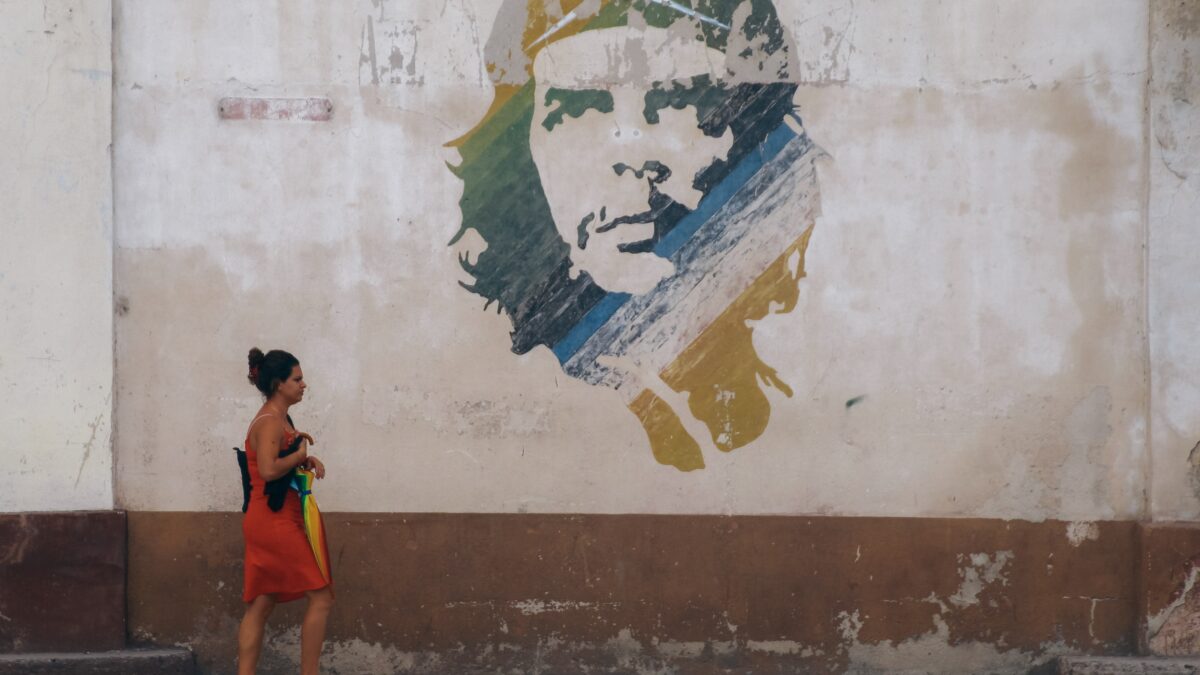Oct. 9 will mark 56 years since the death of Cuban guerrilla Ernesto “Che” Guevara. Apparently, it does not matter that he helped the Castros create an authoritarian regime that now supports the oppression of hundreds of millions of people around the world, because clueless college students at Syracuse University in New York still elevate Che as a representative of liberation and “free” thinking.
But this ignorant reverence is much more pervasive than a mural on display at a particular university — Che remains a popular and venerated figure despite his rightfully infamous reputation. College students all over the Americas (often from wealthy families) use his image to LARP as communist revolutionaries. They have worn their Che T-shirts proudly, fancying themselves the saviors of the poor and oppressed, despite the fact that most of these T-shirts are made in sweatshops in Central America.
Graffiti commemorating Che is plastered all over towns and universities in Latin America, Mexico, Colombia, and Bolivia, where Che was killed by Bolivian special forces with the help of the United States. Prominent left-wing newspapers and outlets like Jacobin, Current Affairs, and Democracy Now! have written and produced fawning fluff pieces about Che’s legacy in the developing world. In 2004, NPR commemorated the 30th anniversary of Che’s death by reporting on his legacy as an “icon.”
We have even experienced this idol-like treatment of Che Guevara firsthand in our own college and university settings. In one Spanish-language class at the University of British Columbia, people read Che’s books and articles with great fervor, some even citing him as a role model. Someone showed up to class in full Che cosplay once, touting his famous quote, “Better to die standing than to live on your knees.” In another Spanish-language class at the ESEADE Instituto Universitario in Buenos Aires, a large portrait of Che welcomed all students to class every morning.
The anniversary of Che’s death will likely usher in another wave of left-wing puff pieces depicting him as noble or misunderstood. Or, at the very least, crowds of students and self-proclaimed intellectuals celebrating his legacy. The truth, however, is that Che Guevara was a ruthless tyrant. His true legacy consists of the millions who have suffered under his regime.
The Cuban government Guevara helped cultivate harvested political dissidents’ blood before their executions, tortured and murdered civilian noncombatants, and confiscated properties and businesses for the sake of “agrarian reform.”
Che also helped execute and set up firing squads for members of the political opposition in Cuba, including those with ties to the previous government. Cuban writer David Mitrani, one of Che’s friends from youth, said Che became an “effective, violent, selective, and cold killing machine” when in power. He did indeed become a “killing machine.” When in charge of the Sierra Maestra prison, Che also said, “At the Sierra Maestra, we executed many people by firing squad without knowing if they were fully guilty.”
In the early 1960s, Che urged the placement of Soviet nuclear missiles on the island of Cuba. While Soviet strategists and some in the Castro regime saw this as a defensive mechanism to slow U.S. weapon development and prevent a potential U.S. nuclear first strike, Che saw this as an opportunity to start a nuclear war with the United States.
When the Soviets removed the missiles, Che “urged Khrushchev to launch a nuclear strike, now, against US cities.” His targets? Los Angeles, New York, or Washington. He spent the rest of his life claiming he would have pressed the nuclear button if he had been in charge. Truly a man of peace.
Moreover, Che was no democrat, but an authoritarian ideologue. When his army seized power in Havana, he declared, “All right, it is dictatorship.” Che viciously armed and trained violent groups around the world, hoping to turn them into far-left dictatorships. These countries included Bolivia, Angola, Congo, and, of course, Cuba.
Che also helped inspire terrorist groups with a leftist bent, including the Irish Republican Army in Northern Ireland, the Zapatista Army of National Liberation in Southern Mexico, and the Revolutionary Armed Forces of Colombia, all of which have added to their respective countries’ instability, conflict, and polarization. The Irish government even has a Che stamp in commemoration of his death.
Successful government revolutionaries, including Mao Zedong in China, the Khmer Rouge in Cambodia, Kim Il Sung in North Korea, and Ho Chi Minh in Vietnam, commended Che. The respect was mutual, as Che quoted Mao in his writings and praised Kim Il Sung in interviews and speeches. Their regimes killed millions and built systems of oppression that last to this day.
Some revolutionaries who fought alongside Che wanted a European-style social-democratic system in Cuba, but Che dismissed them outright. Maybe he would’ve preferred to put them in state-sponsored labor camps, which were reminiscent of Soviet gulags.
Che Guevara was not a hero, a freedom fighter, or a tortured soul who “did what he had to do” when faced with back-breaking poverty or American imperialism. He was evil; it’s as simple as that. No self-respecting freeman should wear a T-shirt with Che’s likeness plastered all over it.
Nothing he did is worth celebrating, and no anniversary related to him is worth honoring.









